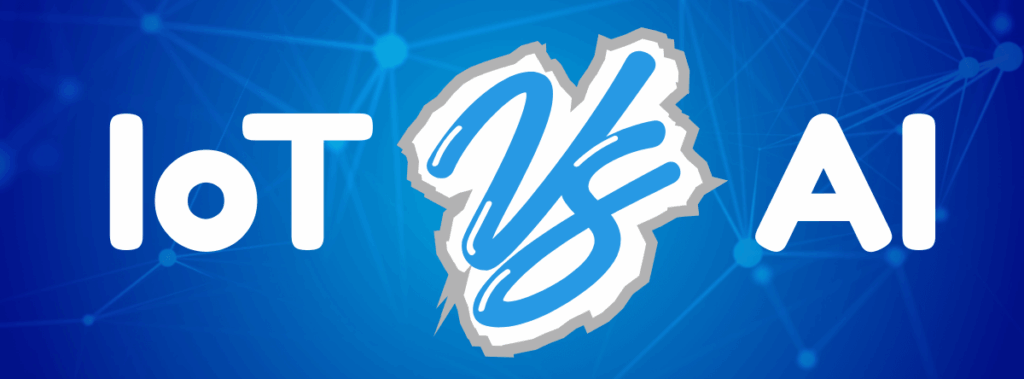In today’s rapidly evolving digital landscape, Artificial Intelligence (AI) and the Internet of Things (IoT) are two transformative technologies reshaping industries—from manufacturing to healthcare and beyond. While both are powerful on their own, their integration unlocks unprecedented capabilities. This blog explores the key differences between AI and IoT, their individual strengths, and how they complement each other in modern software solutions.

What Are AI and IoT?
AI (Artificial Intelligence): Refers to the simulation of human intelligence in machines. It enables systems to learn from data, make decisions, and improve over time. AI encompasses technologies like Machine Learning (ML), Natural Language Processing (NLP), and Computer Vision.
IoT (Internet of Things): Involves a network of physical devices embedded with sensors, software, and connectivity to collect and exchange data. IoT enables real-time monitoring, automation, and control across various environments.
| Feature | Artificial Intelligence (AI) | Internet of Things (IoT) |
|---|---|---|
| Purpose | Decision-making and automation | Data collection and connectivity |
| Core Function | Analyzing and learning from data | Sensing and transmitting data |
| Technology Stack | Algorithms, neural networks, ML models | Sensors, actuators, embedded systems |
| Data Dependency | Requires large datasets for training | Generates real-time data from devices |
| Use Cases | Predictive analytics, chatbots, image recognition | Smart homes, industrial automation, asset tracking |
IoT vs AI: Which Is Better?
It’s not a matter of which is better—AI and IoT serve different but complementary roles. IoT provides the data, while AI processes and learns from it. For example, in a smart factory:
- IoT sensors monitor machine performance.
- AI algorithms predict maintenance needs and optimize operations.
- Together, they create intelligent systems that are proactive rather than reactive.
Benefits of Integrating AI with IoT
- Enhanced Decision-Making: AI analyzes IoT data to provide actionable insights.
- Predictive Maintenance: Reduces downtime and operational costs.
- Automation: Enables smart responses without human intervention.
- Scalability: Supports large-scale deployments with intelligent control.
Choosing the Right Partner for AI and IoT Development
To harness the full potential of these technologies, partnering with a trusted provider is essential. At einnosys, we offer:
- Artificial Intelligence Services
- AI ML Development Company Expertise
- AI ML Development Services
- IoT Software Development
- IoT Development Services
Our solutions are tailored for industrial software teams and manufacturing leaders seeking innovation and efficiency.
AI and IoT are not rivals—they are allies in digital transformation. Understanding their differences and integration potential is key to building smarter, more responsive systems. Whether you’re exploring predictive analytics or smart automation, combining AI and IoT can drive your business forward.


